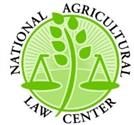A federal court decision last week vacated the registrations of dicamba products XtendiMax, Engenia, and Tavium for over-the-top applications on soybean and cotton crops, making the use of the products unlawful (see our February 12, 2024 blog post). The decision raised immediate questions about whether the U.S. EPA would exercise its authority to allow producers and retailers to use “existing stocks” of dicamba products they had already purchased. Yesterday, the U.S. EPA answered those questions by issuing an Existing Stocks Order that allows the sale and use of existing stocks of the products that were packaged, labeled, and released for shipment prior to the federal court decision on February 6, 2024. For Ohio, the EPA’s order allows the sale and distribution of existing stocks until May 31, 2024 and the use of existing stocks until June 30, 2024.
Here is the EPA’s order:
- Pursuant to FIFRA Section 6(a)(1), EPA hereby issues an existing stocks order for XtendiMax® with VaporGrip® Technology (EPA Reg. No. 264-1210), Engenia® Herbicide (EPA Reg. No. 7969-472), and A21472 Plus VaporGrip® Technology (Tavium® Plus VaporGrip® Technology) (EPA Reg. No. 100-1623). This order will remain in effect unless or until subsequent action is taken. The issuance of this order did not follow a public hearing. This is a final agency action, judicially reviewable under FIFRA § 16(a) (7 U.S.C. §136n). Any sale, distribution, or use of existing stocks of these products inconsistent with this order is prohibited.
- Existing Stocks. For purposes of this order, “existing stocks” means those stocks of previously registered pesticide products that are currently in the United States and were packaged, labeled, and released for shipment prior to February 6, 2024 (the effective date of the District of Arizona’s vacatur of the dicamba registrations). Pursuant to FIFRA section 6(a)(1), this order includes the following existing stocks provisions:
a. Sale or Distribution by the Registrants. As of February 6, 2024, sale or distribution by the registrants of these products is prohibited, except for the
purposes of proper disposal or to facilitate lawful export.
b. Sale or Distribution by Persons other than the Registrants. Persons other than the registrants, including but not limited to co-ops and commercial distributors, who are already in possession of these products as of February 6, 2024, may sell or distribute these products until the end date for sale and distribution of existing stocks identified in Table 1; except that such persons may distribute these products after the date identified in Table 1 solely for purposes of proper disposal, lawful export, or to facilitate return to the manufacturer.
c. Distribution or Sale by Commercial Applicators. Notwithstanding paragraph 2.b, for the purpose of facilitating use no later than the relevant end date for use of existing stocks identified in Table 1, distribution or sale of existing stocks of these dicamba products that are in the possession of commercial applicators is permitted
until the relevant end date for use in Table 1.
d. Use of Existing Stocks. As of the date of this order, use of XtendiMax, Engenia, and Tavium is permitted until the relevant date identified in Table 1, provided that such use of existing stocks is consistent in all respects with the previously approved labeling accompanying the product.


What happens next?
The Existing Stocks Order addresses dicamba over-the-top applications for the current growing season, but it’s not the end of the dicamba controversy. One potential next step could come from the petitioners in the federal case that vacated the dicamba product registrations, Center for Biological Diversity v. EPA. The petitioners could file a motion asking the Court to review the Existing Stocks Order–an action that took place in the previous dicamba cancellation case, National Family Farm Coaltion v. EPA (Monsanto). The petitioners in that case unsuccessfully sought an Emergency Motion to enforce the vacatur and hold the EPA Administrator in contempt for issuing an Existing Stocks Order. A second next step that may yet play out is an appeal of the recent federal decision by either the EPA or the dicamba product manufacturers–those parties have 30 days from the February 6 decision date to file an appeal. At least one thing is clear at this point: the long-term future of dicamba over-the-top products will continue to exist in a state of uncertainty.



 It’s time for another roundup of legal questions we’ve been receiving in the Agricultural & Resource Law Program. Our sampling this month includes registering a business, starting a butchery, noxious weed liability in a farm lease situation, promoting local craft beer at a farmers market, herd share agreements, and agritourism’s exemption from zoning. Read on to hear the answers to these questions from across the state.
It’s time for another roundup of legal questions we’ve been receiving in the Agricultural & Resource Law Program. Our sampling this month includes registering a business, starting a butchery, noxious weed liability in a farm lease situation, promoting local craft beer at a farmers market, herd share agreements, and agritourism’s exemption from zoning. Read on to hear the answers to these questions from across the state.

